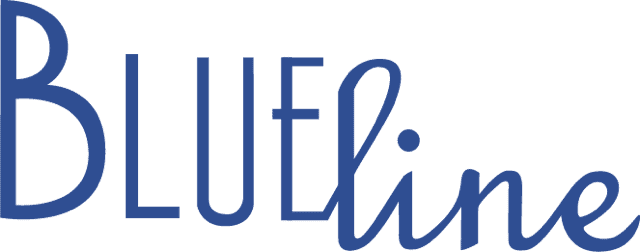Not so long ago, being a manager was fairly straightforward. You had 5-7 direct reports, and you had the experience necessary to cover all of their roles in a pinch. You set expectations, modeled best practices, coached them, and evaluated their performance.
How times have changed! Today, in the face of hybrid work environments and shifting corporate hierarchies, it’s impossible for managers to have all the answers. To that end, many of the clients we work with have migrated to a servant leadership model, in which they focus on promoting the growth of the individuals who report to them (rather than directing their actions). Along with the change in working environment has come the increasing popularity of coaching provided by external providers, as opposed to the individual’s manager within the organization. While this model has some very real benefits in many cases, it also comes at a cost.
Remember the old adage that employees don’t leave organizations, but managers? Serving as a coach is a powerful and critical way to connect with employees and earn their trust. Take that away, and you remove one of the tethers keeping top employees at your organization.
The focus of this blog is to help you think through the decision of internal vs external coaching. Effective internal coaching almost always requires an investment in training to equip your leaders with coaching skills and cultivate a coaching culture. The alternative is to hire outside coaches to work one-on-one with employees at various levels. Generally, this is not an either/or situation, but rather an opportunity to provide the right resources at the right levels.
The role of external coaching consultants
CEOs and other C-level executives often hire outside coaches to help them build their personal and professional skills. Top-level leaders use external coaches because they don’t always have access to qualified people within the organization to take on the executive coaching role. Furthermore, the most popular executive coaches are those with a track record of success in high-level leadership roles, as well as coaching credentials that enable them to pass on their wisdom.
Other benefits of using an external coach:
- Completion of an extensive, accredited training program helps them drive results more efficiently
- Expertise in specific skill(s) that matches the coachee’s needs
- Not affected by internal politics
- Strong objectivity and confidentiality
However, external coaches can be expensive. And because they’re external, they’re unable to deliver on the day-to-day coaching that today’s employees crave. While the work of external coaches is important and often vital, it’s temporary and executed by outsiders. The kinds of engagements that create an authentic coaching culture across the organization are ongoing and executed by those on the inside.
Creating a culture of coaching
Today’s employees value ongoing coaching and career development, and businesses need to deliver it to remain relevant and competitive. In a hybrid work environment, it’s even more critical to be intentional about offering coaching, as casual interactions are harder to come by. To this end, equipping managers with coaching skills creates an empowering environment that helps employees to thrive.
What are the characteristics of an effective manager-as-coach?
- Asks questions instead of providing answers
- Sparks insights by actively listening and asking challenging questions
- Supports employees, rather than judging them
- Facilitates their team’s development instead of dictating what needs to be done
- Unlocks people’s potential to maximize their own performance
The best coaches can artfully impart knowledge and help others discover it themselves. But good coaching takes training and practice. And making it happen as an everyday practice throughout the organization requires a cultural shift. Instead of only taking place in formal coaching sessions, coaching conversations (led by managers trained in the art of coaching) happen in everyday interactions and brief exchanges; they’re woven into the culture of the organization.
A coaching capability reality check
In what’s now become a classic study of leadership styles by Daniel Goleman, leaders ranked coaching as their least-favorite style (the other options were: authoritative, affiliative, democratic, and pacesetting). Many said they simply didn’t have time to teach people and help them grow. We’ve seen for ourselves that while many managers are comfortable when it comes to allocating resources, setting goals, and developing or evaluating reports, they are often hesitant to engage in meaningful performance coaching dialogue.
The irony is that most managers think they’re pretty decent at coaching! However, the facts say otherwise. In another study, 3,761 executives assessed their own coaching skills, along with the people who worked with them. The results were far from aligned, with 24% of the executives significantly overestimating their abilities.
Clearly, organizations have some gaps to fill.
Empowering your employees to lead
Here’s an example from our portfolio. A large pharmaceutical company turned to Blueline to train leaders at all levels to have effective career coaching discussions with their teams. The company was rolling out technology that assessed an individual employee’s likelihood of success as a leader. Everyone in the organization who wanted to be considered for leadership had the opportunity to take the assessment. But what if the assessment came back saying that an individual didn’t have the aptitude or wasn’t eligible? Or what if potential leaders chose not to take the assessment? The company needed a way to train its current leaders to navigate pre-assessment and post-assessment conversations while maintaining (or regaining) their team members’ trust.
We designed and produced a team-driven, discovery learning experience that was fully immersive and synchronous in order to help leaders navigate tricky conversations and develop the skills and confidence necessary for effective pre-and post-talent assessment development planning conversations with employees. This training paved the way for managers to develop their coaching skills and become more effective leaders.
Implementation Showcase
Build capability throughout your organization
With our world in flux, one of the most powerful ways to drive organizational transformation is to train your internal teams in the evergreen skills that will set them up for success in nearly anything. While there is certainly a place for external coaching, internal leaders need to learn to be coaches who are skilled in drawing the best out of the people with whom they work.
Have questions or want to brainstorm potential strategies for creating an internal culture of coaching in your organization? Blueline is here to help!
Could your team benefit from leadership development?
Effective leadership training should be:
- Engaging
- Thought-provoking
- Collaborative
- Truly productive
Experience scenario-based learning with these FREE leadership development scenarios with 1st and 2nd level leaders.


